Like many people who live in climates with multiple seasons, I use those seasons to guide my food habits. As Nancy Silverton remarks in The Cookie That Changed My Life and More Than 100 Other Classic Cakes, Cookies, Muffins, and Pies That Will Change Yours, eating with the seasons changes our experience of food. Speaking of fruit’s seasonality, Silverton reminds the reader, “that’s when they are at their optimal flavor, and that’s when they should be used. Fruit desserts made with out-of-season fruit, flown in from some faraway place . . . will never live up to the flavor of the same dessert made with local seasonal fruit—no matter how much butter and sugar are involved!” (392).
As we eat with the seasons, we experience the best of what’s available—the freshest produce, cheese, or meat, we take advantage of the special moments and harvests, and create traditions and routines that foster memories and create anticipation for the next cycle.
For example, consider the phenomenon that is pumpkin spice season, made up by Starbucks in 2003, https://www.foodandwine.com/lifestyle/pumpkin-spice-history.
Though most Americans (particularly those in cold climates) have been delighted by the ability to buy tomatoes and berries year-round, we also have always embraced seasonality—looking forward to rhubarb pie in the early summer and making squash soups in the fall.
Thus, I made hot weather food from The Joy of Sharing for my August and September installments of “Vintage Dishes” my column appearing on the first Sunday of every month in The Fargo Forum. In July, I made Margaret Lachenmeier’s “Fruit Slush,” a fruity, fizzy, frozen beverage (see https://www.inforum.com/lifestyle/cool-down-with-a-frozen-fruit-slush).
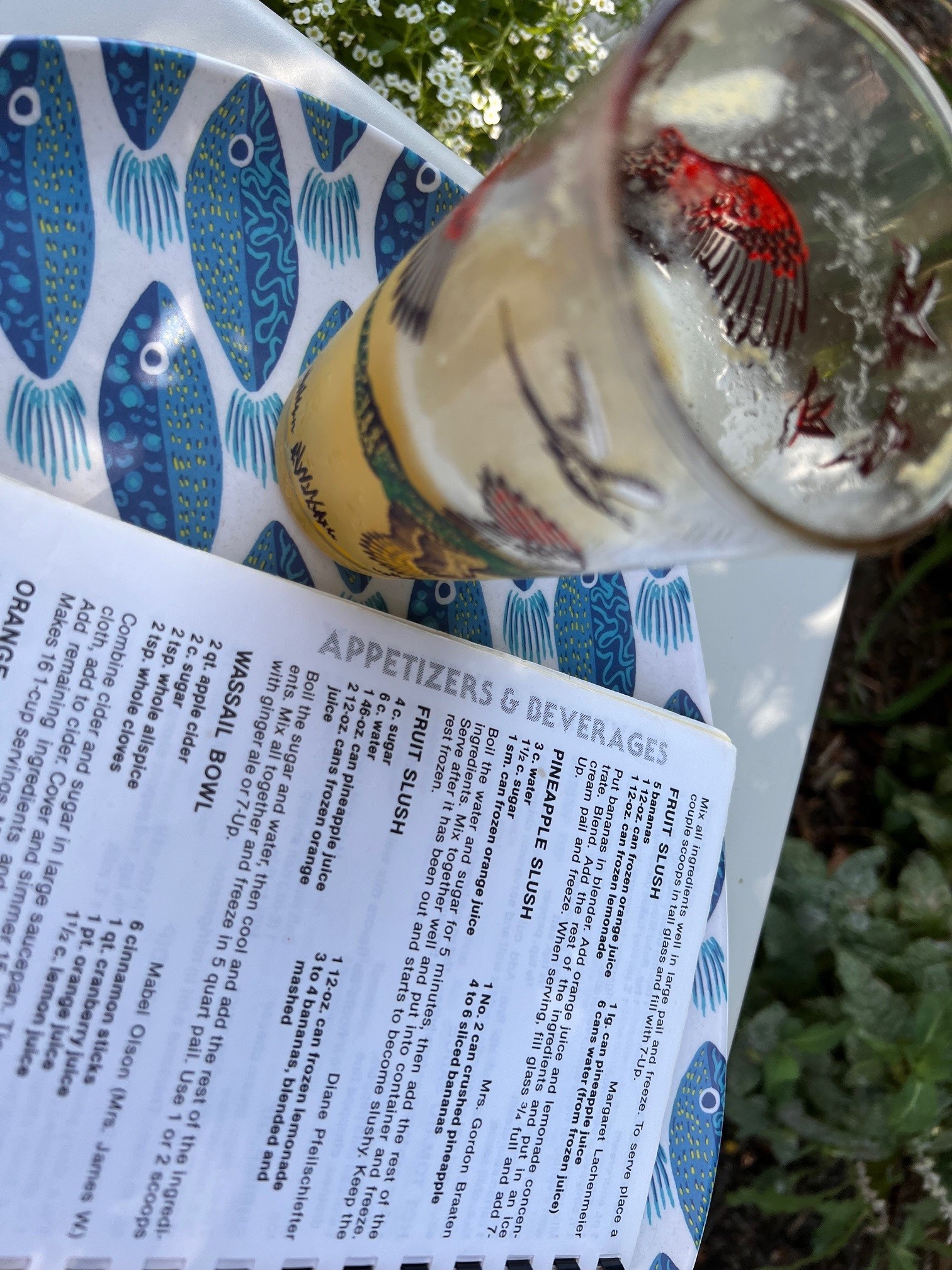
For the Sunday of Labor Day Weekend in September, I made “Waikiki Appetizers,” a sweet and sour meatball dish submitted by Mavis Anderson: https://www.inforum.com/lifestyle/step-back-in-time-with-this-retro-appetizer-for-labor-day).

Citrus Celebration
Since I’m an English professor, linguist, and writer, I feel qualified to weigh in on names and titles. I’m happy to name your child or pet, if you like, or at the least offer advice.
I would have called this “Citrus Slush,” since all of the flavor comes from citrus fruits: oranges, lemons, and pineapples. It feels like Hawaii in a glass. I’ve written about slushes and their history in both my column and when I made “Frozen Fruit Slush” submitted by Tudi Henderson (https://blog.cord.edu/karlaknutson/2023/08/01/food-for-fun-in-the-sun-part-iii/), and I am now an enthusiast—slushes are refreshing, colorful, and versatile. I kept a frozen slush in my freezer most of the summer to pull out whenever my daughter’s friends came over for playdates and pool parties.
“Fruit Slush” Photo Essay
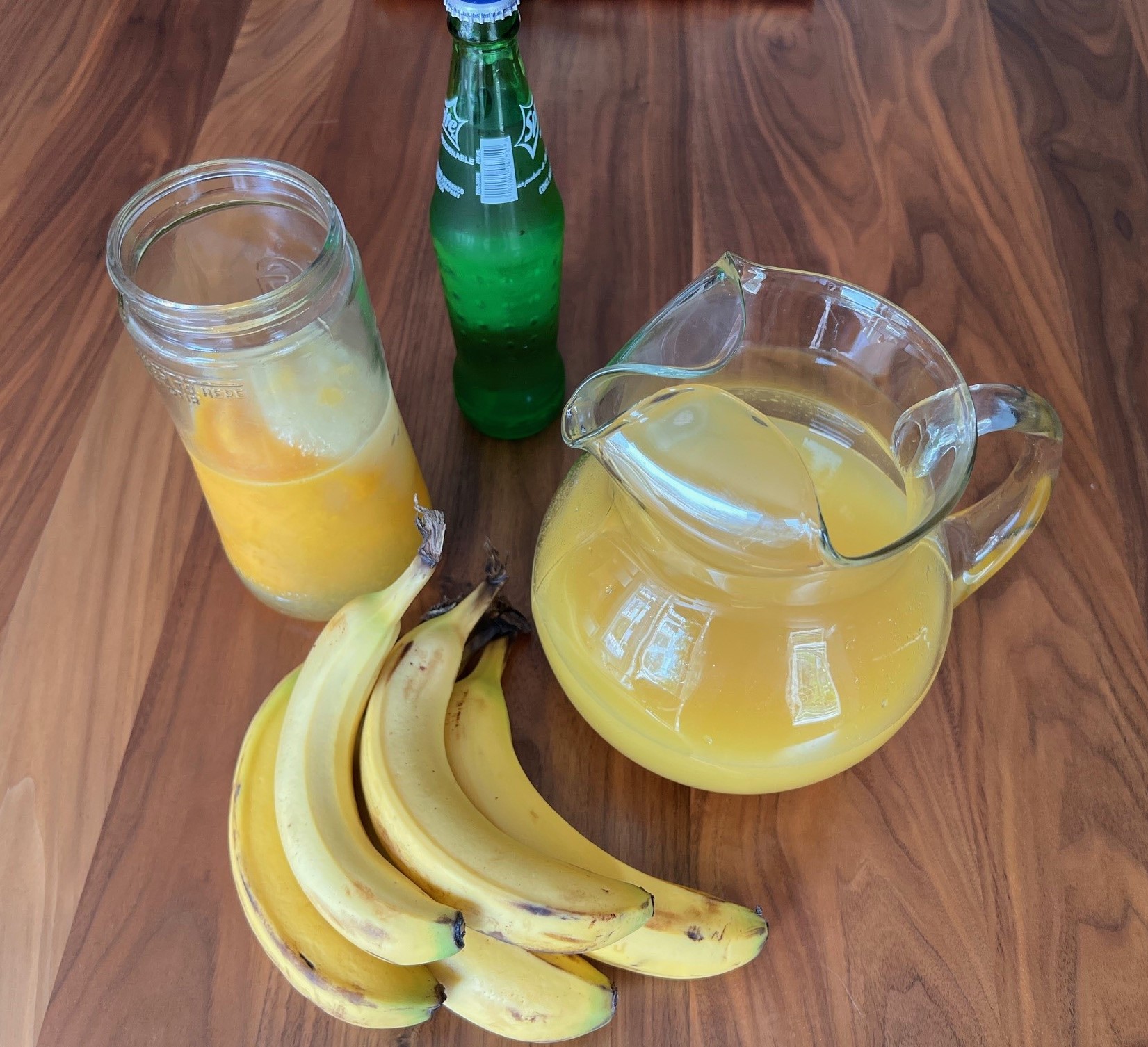
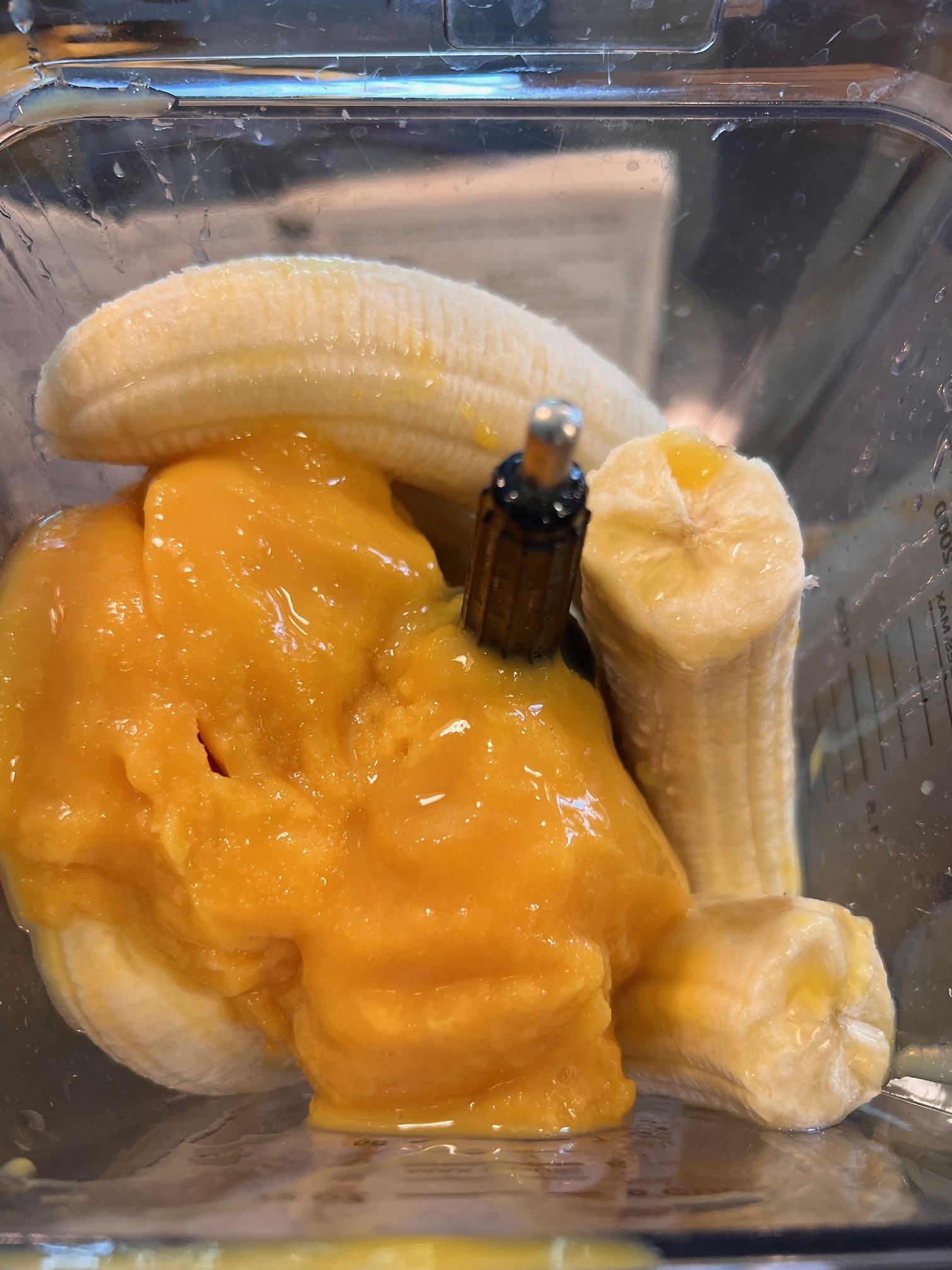
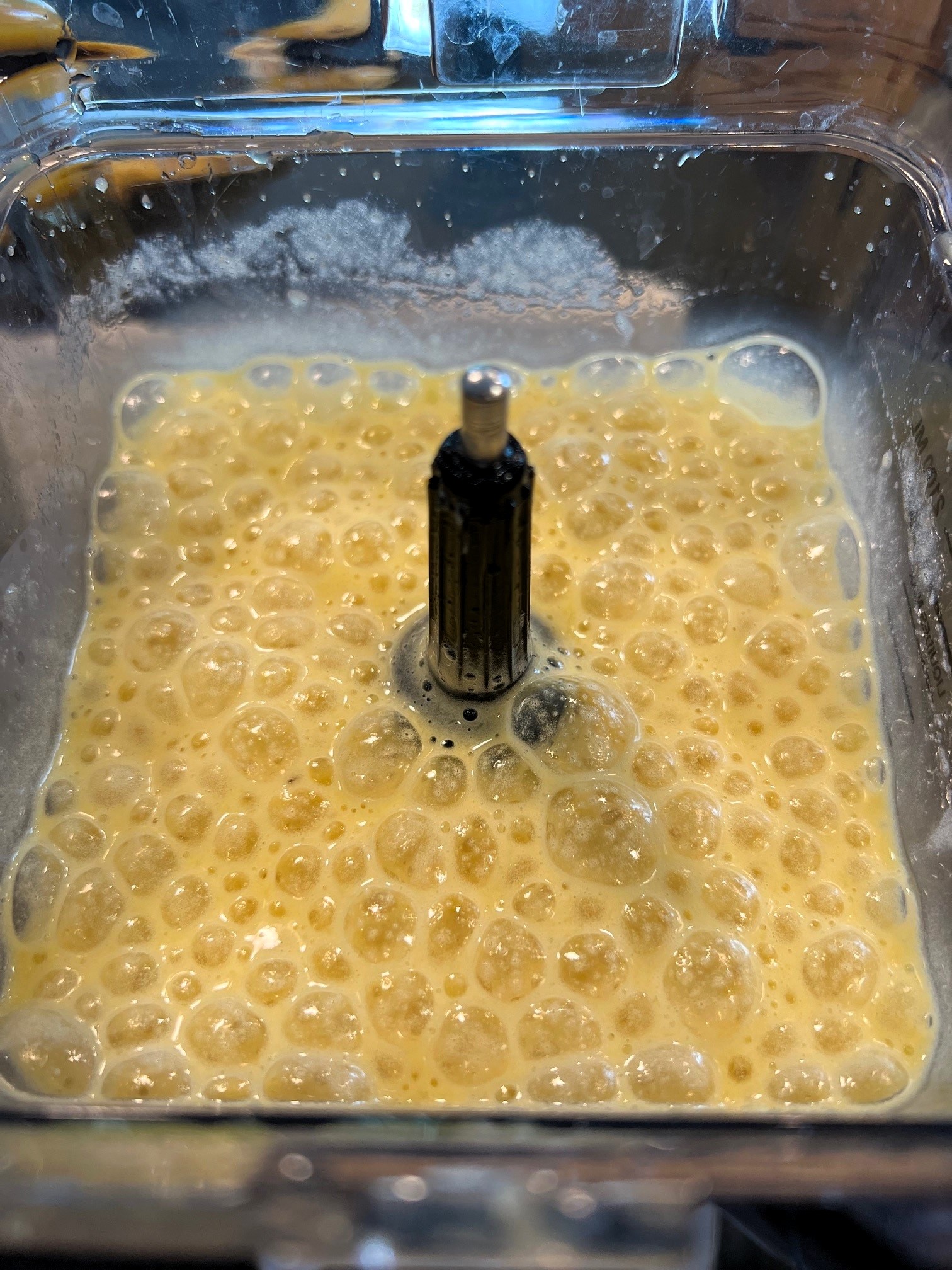

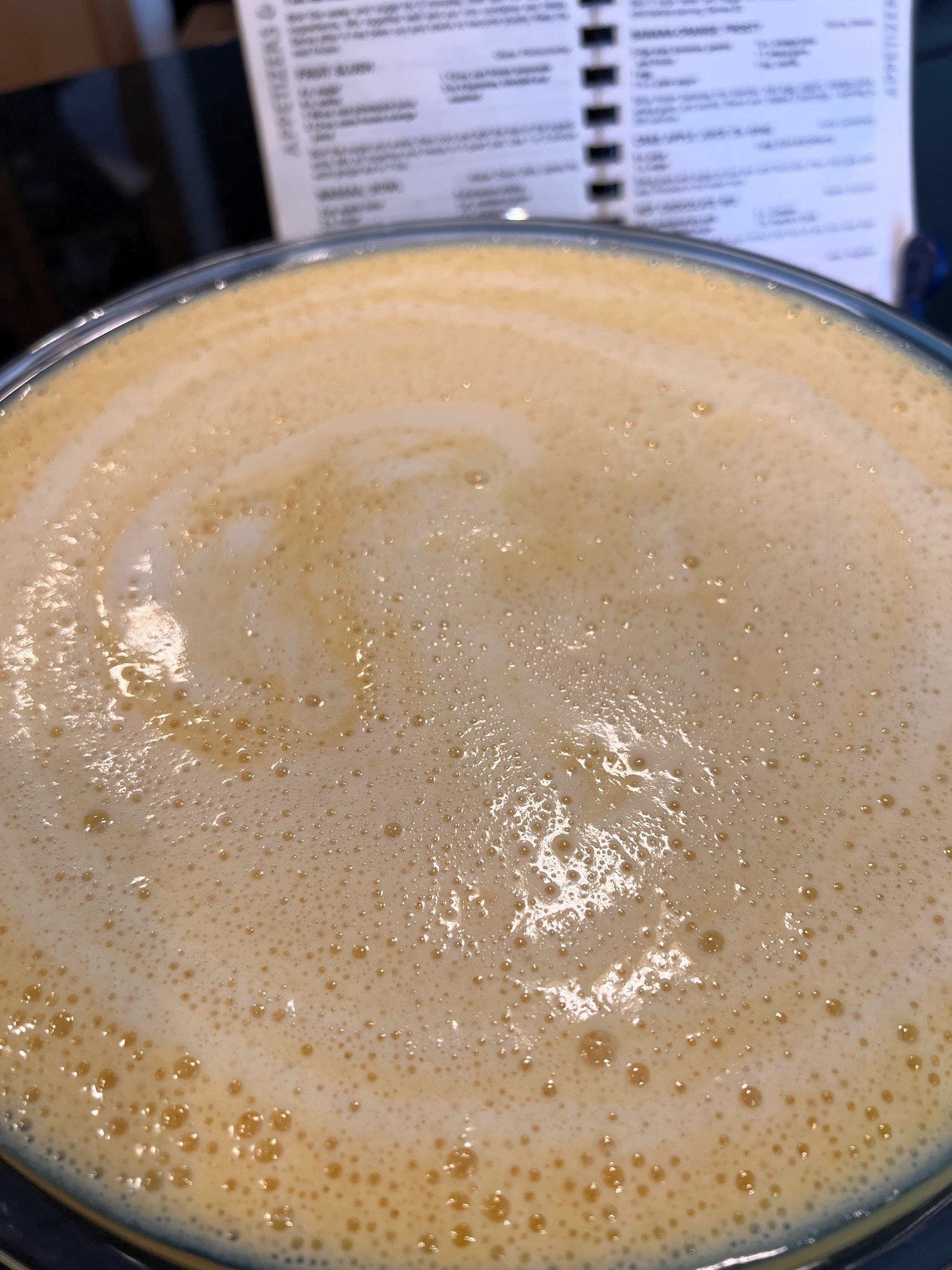
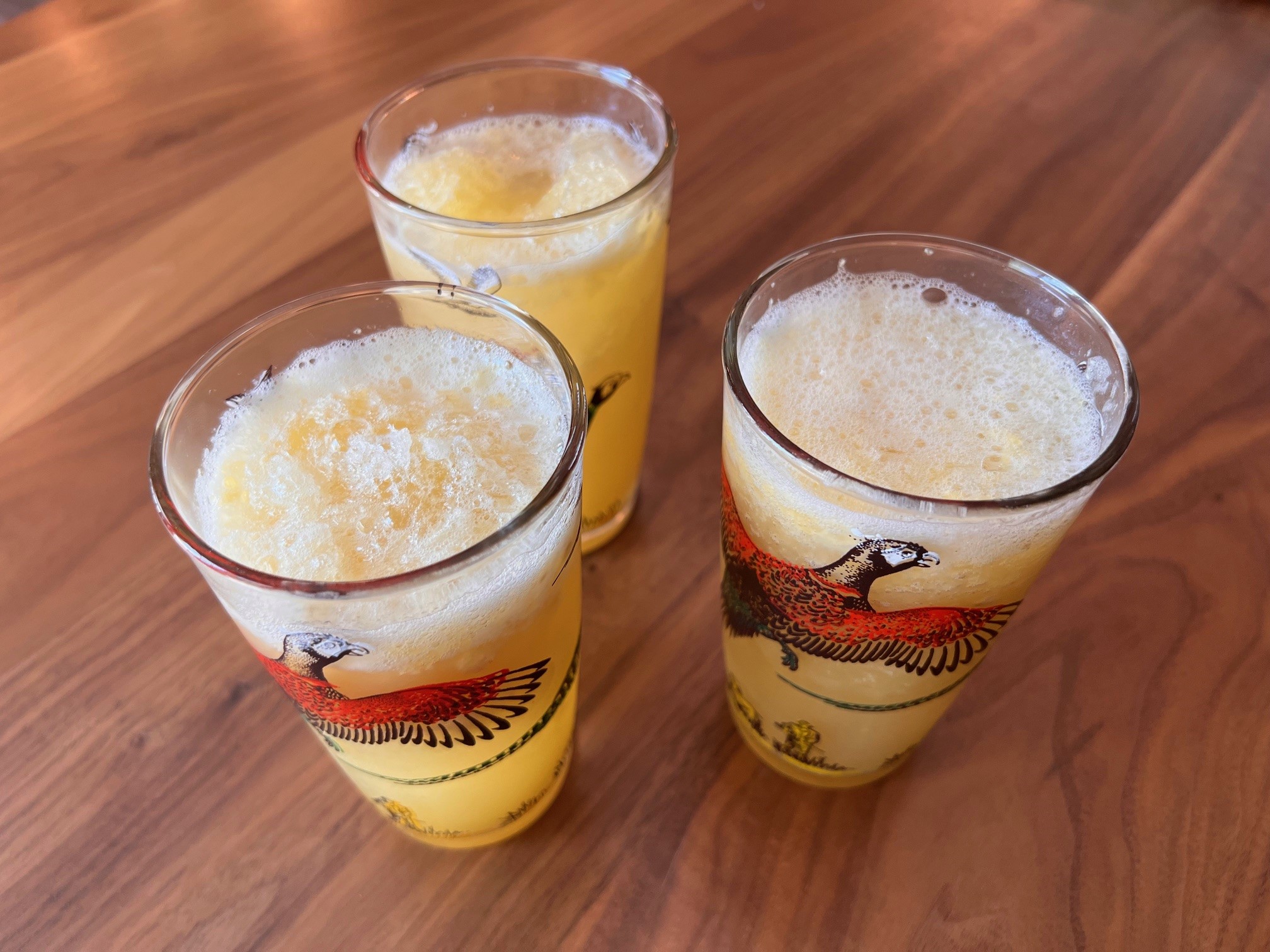
Contributor: Margaret Lachenmeier
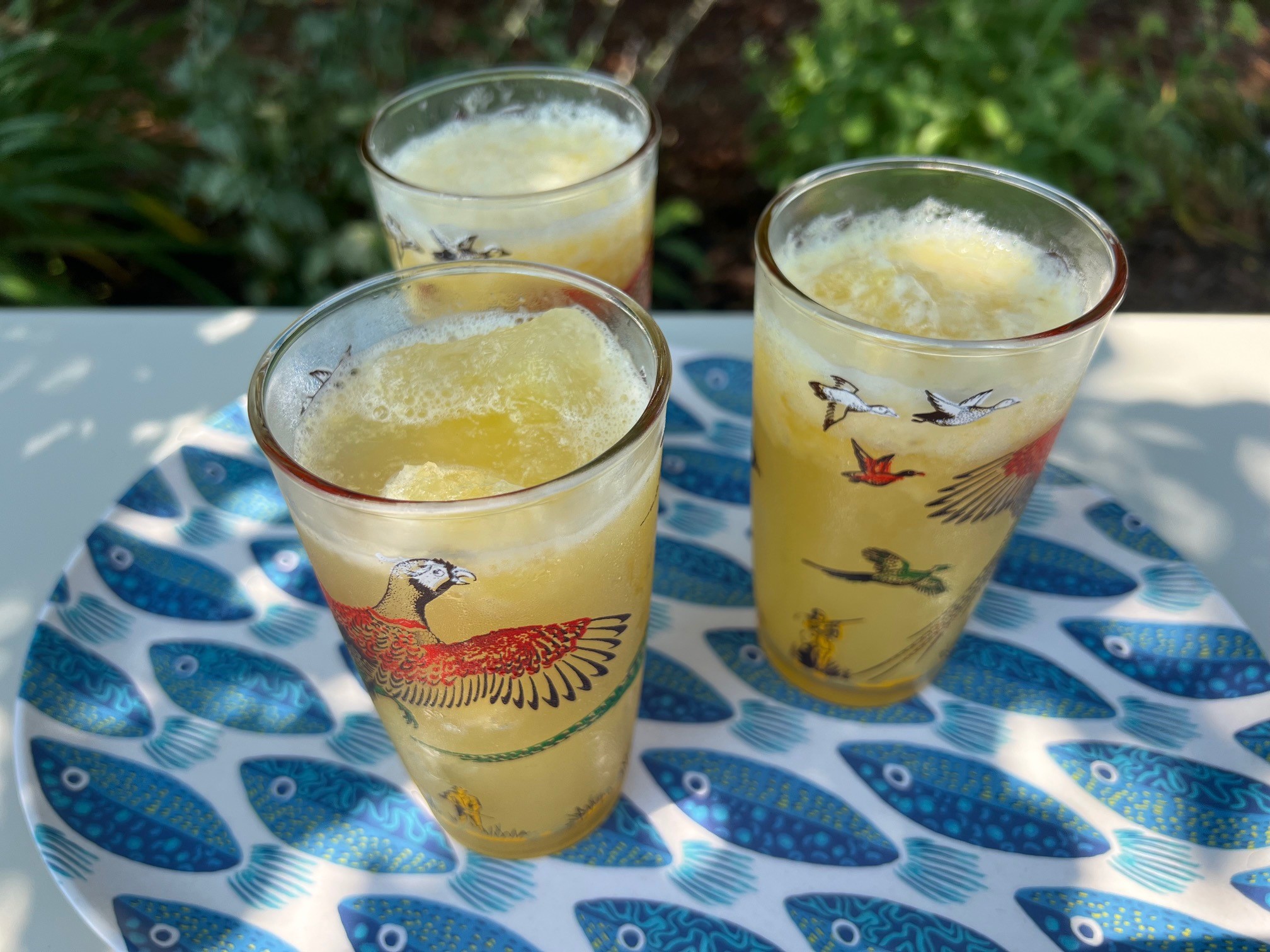
Margaret Kaeding was born in Minot, ND, in the early 1940s, and graduated from Minot High School in 1959. In 1961, she married Herbert Lachenmeier at St. Pauls Lutheran Church in Minot, where the couple lived until they moved to Velva in 1966. Born in 1940, Herbert “Herbie” Lachenmeier was the son of August and Alma Lachenmeier, rural Napoleon, ND. Their daughter, Lori, joined them in 1968, and later three grandchildren did too. Margaret was a beautician and ran a beauty salon out of her home for decades; her artistic skills also extended to her facility with cooking and creativity with décor and crafts. She was also active in the Velva Homemakers group. One interviewee described her as “a very talented woman.” Herbie worked for the ND State Highway Department, as well as starting his own business in 1976, 3L Landscaping & Concrete. He also worked for FEMA for two flood seasons, an important detail to note, as both Velva and Minot have experienced significant, damaging floods in the past 100 years. Margaret and Herbie were married for fifty-five years; Herbie passed in 2016, and Margaret resides in Velva.
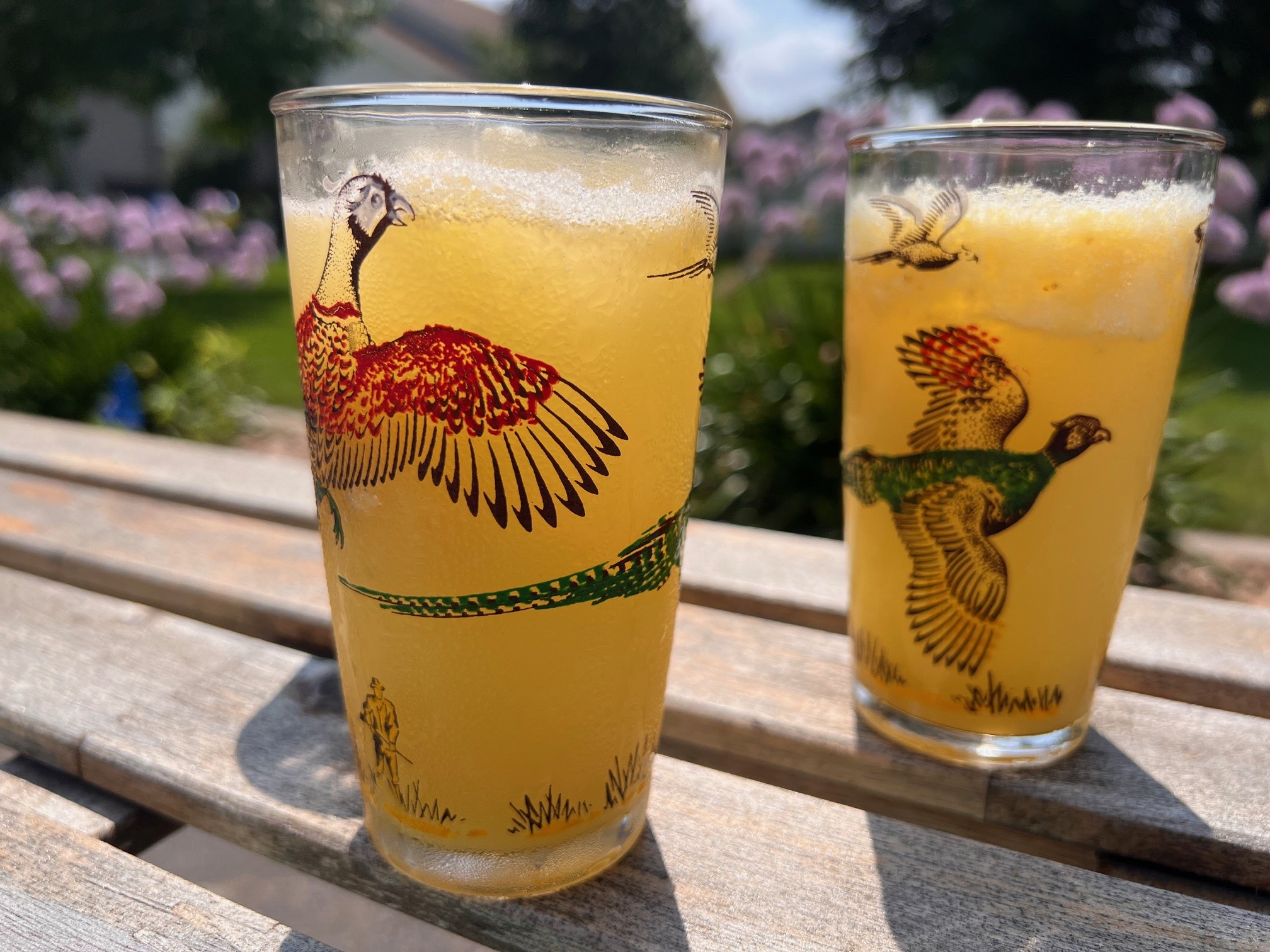
In addition to being known as a great cook, it appears that Margaret might be an enthusiastic cook as well. She contributed a dozen recipes to The Joy of Sharing: “Shrimp Dip,” “Herb Rolls,” “Peanut Butter Bars,” “Creamy Rice Pudding,” “Microwave Hot Fudge Sauce,” “Pizza Cups,” Never Fail Meringue,” “Hamburger Soup,” “Cauliflower Salad,” “Music Mothers’ Potato Salad” (famous at Velva school concessions/fundraisers), and “Caramel Sauce.” The fruit slush was fantastic—I’m eager to try more of these recipes soon.
Meatball Mania: “Waikiki Appetizers”
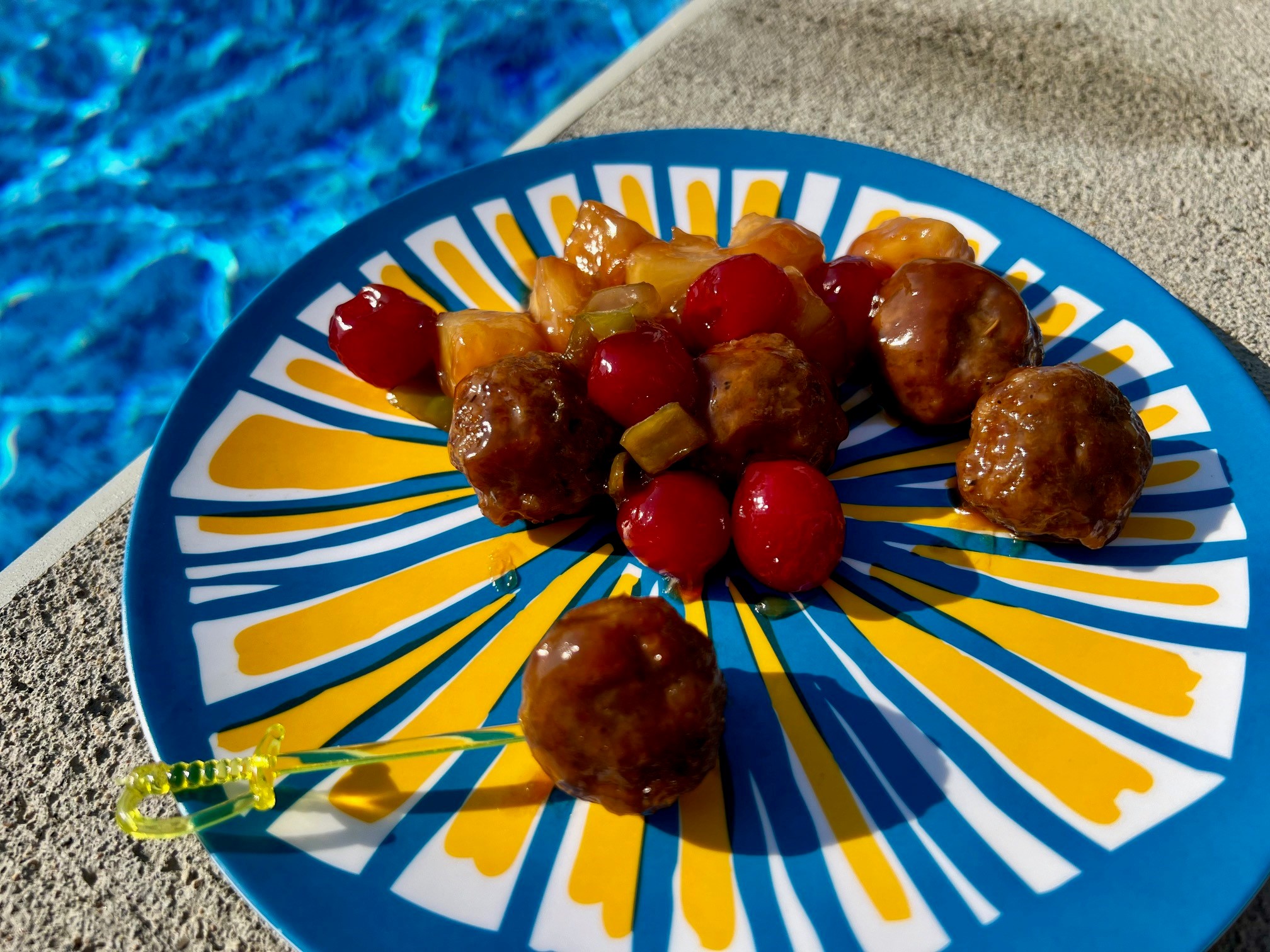
I went back and forth about whether meatballs were a summery appetizer, but ultimately, I decided that tropical-inspired meatballs could be construed thusly, particularly if they were cocktail-sized. I would classify Swedish meatballs and grape-jelly cocktail meatballs as fall or winter appetizers or mains because of their accompaniments, heavier gravy and a rich jelly glaze. But a sweet-and-sour Asian-inspired dish full of dynamically contrasting colors, eaten as either an appetizer or a main dish? Well, that’s clearly a Midwestern appropriation/adaptation inspired by tropical climes and the popularity of tiki.

As Jeff Berry explains in The Oxford Companion to Spirits & Cocktails, edited by David Wondrich, “tiki is a catch-all term not only for tiki drinks—faux-Polynesian punches and cocktails, mostly rum-based, with exotic flavorings and theatrical garnishes—but for the entire tiki pop culture boom engendered by those drinks, which from its inception in 1934 to its 1960s peak grew to encompass faux-Polynesian music, fashion, dining, interior design and commercial architecture” (727). Consequently, cookbooks of all types, including community cookbooks, from the mid-twentieth century include recipes for this type of meatballs, often called “Hawaiian Meatballs” and “Sweet and Sour Meatballs.” Though it’s unclear from the title that this dish portends cocktail meatballs, “Waikiki Appetizers” certainly promises tropical delights.

Amy Thielen’s fantastic cookbook, The New Midwestern Table (I want to make every single recipe in it), notes that sweet and sour meatballs not only flooded mid-century cookbooks—they also found their way onto appetizer and buffet tables: “small sweet-and-sour crockpot meatballs bobbing in vaguely Asian sauces anchor many social events here in the Midwest—and every version, even the overly sweetened and the least loved, is delicious” (45).
Disappointed by the “sausage-balls” (meatballs consisting of only pork sausage) prescribed by “Waikiki Appetizers” I found myself inspired when I read Thielen’s recipe for “Sweet-and-Sour Potluck Meatballs.” Thielen’s recipe was influenced by the approach taken by Twin Cities Hmong cook Mai Ly, resulting in a meatball mixture of ground pork with not only the requisite panade of breadcrumbs with egg and soy sauce, but also peanuts, cilantro, scallions, and carrots.
To compare with the sausage balls, I made Thielen’s meatballs too, and I thought they were tremendously flavorful. Yes, my daughter called them “salad balls,” and a neighbor child became upset when the carrots were noticed (note—chop everything as finely as possible when you have more time than I allotted to the task that day), but these were delicious, as both an appetizer and leftovers for dinner the next night with jasmine rice.
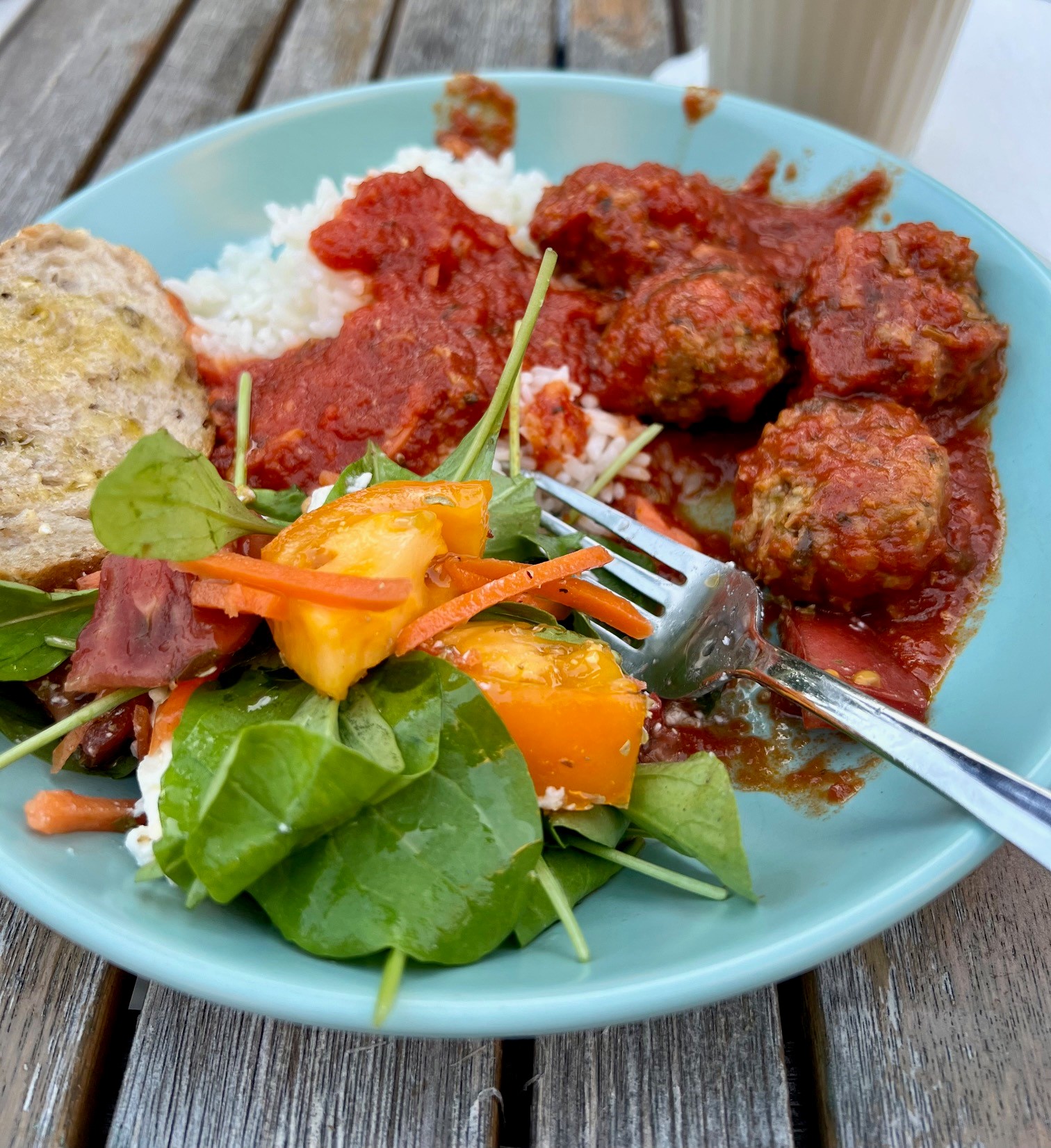
“Waikiki Appetizers” Photo Essay
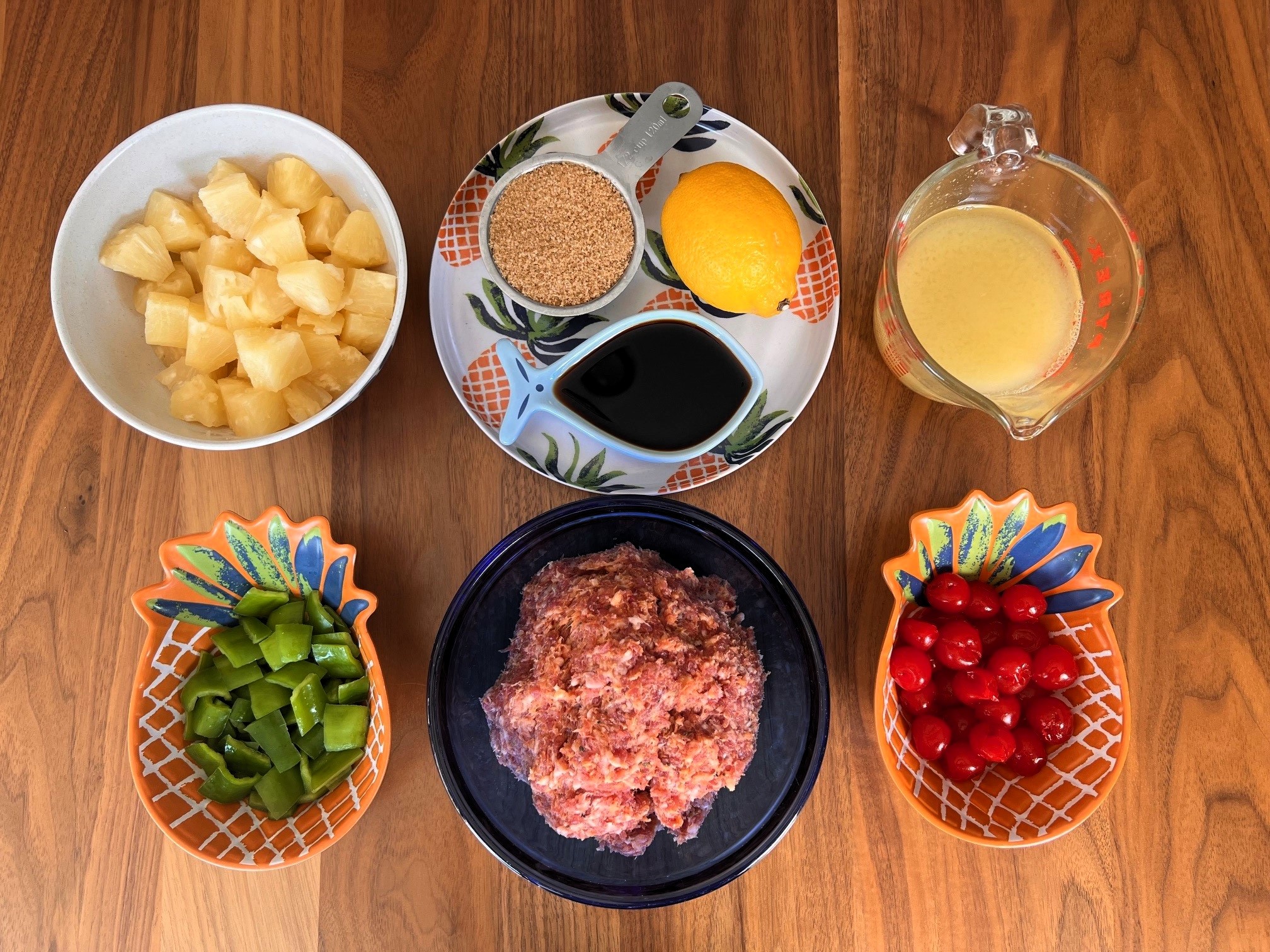




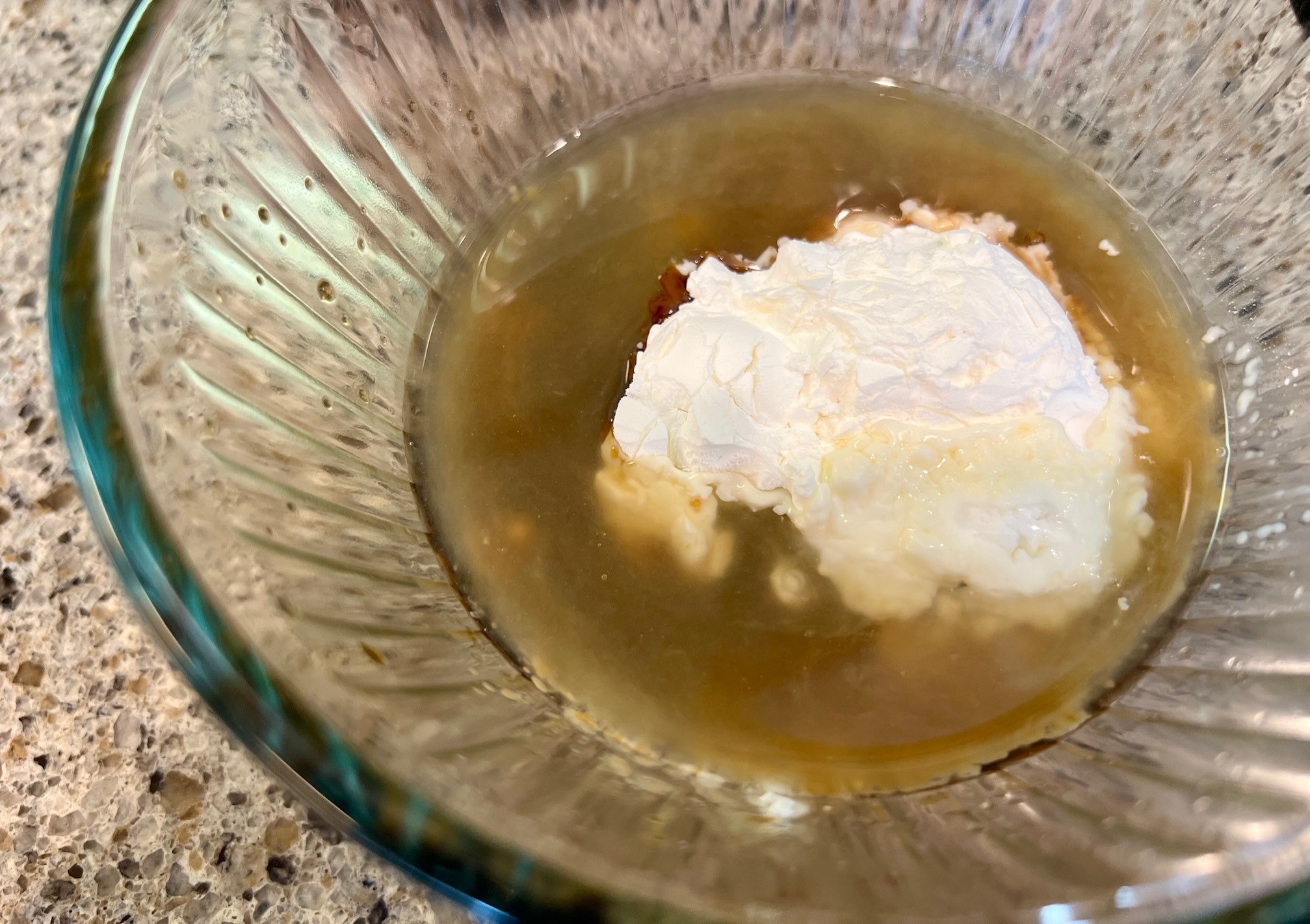
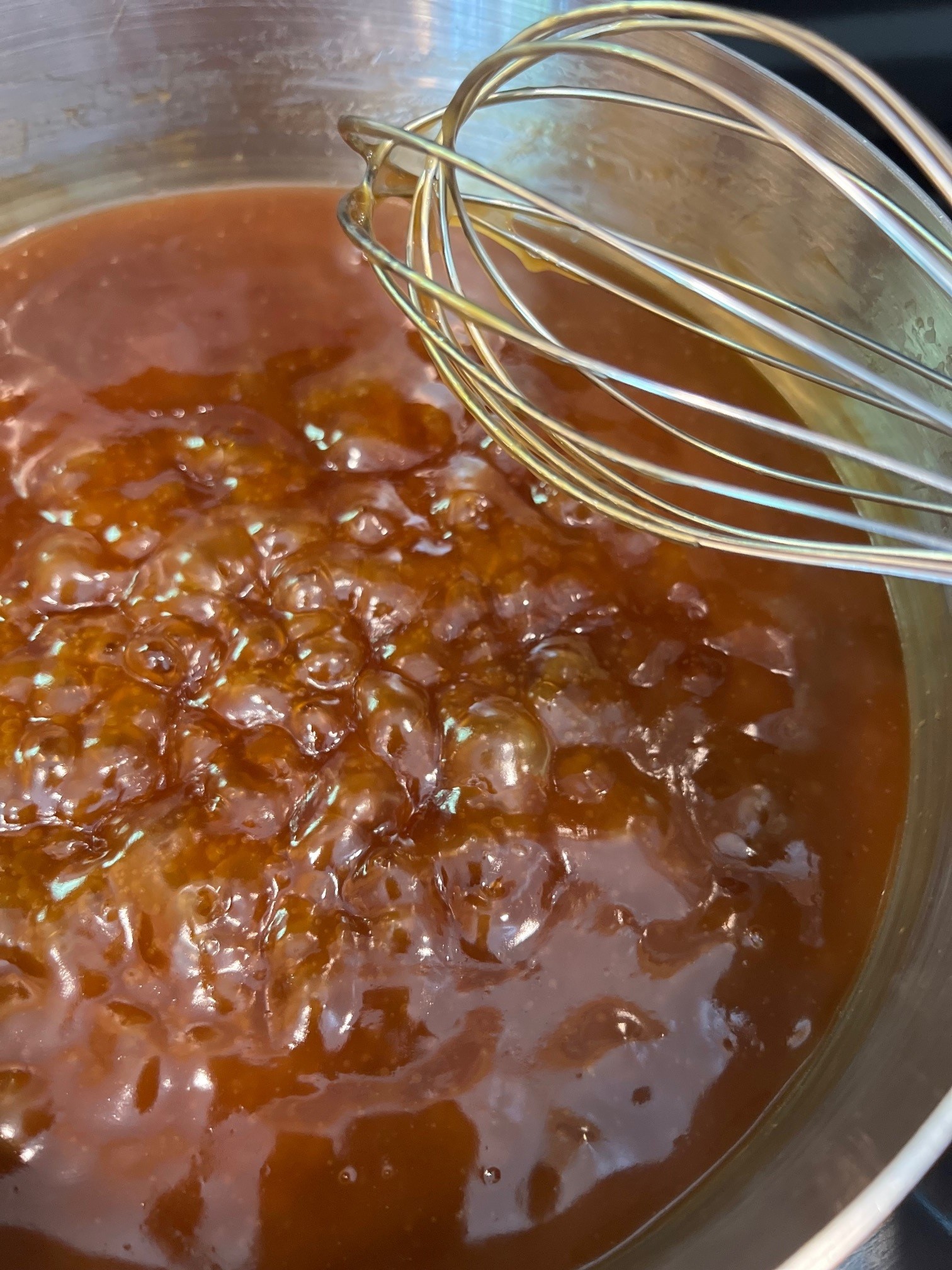
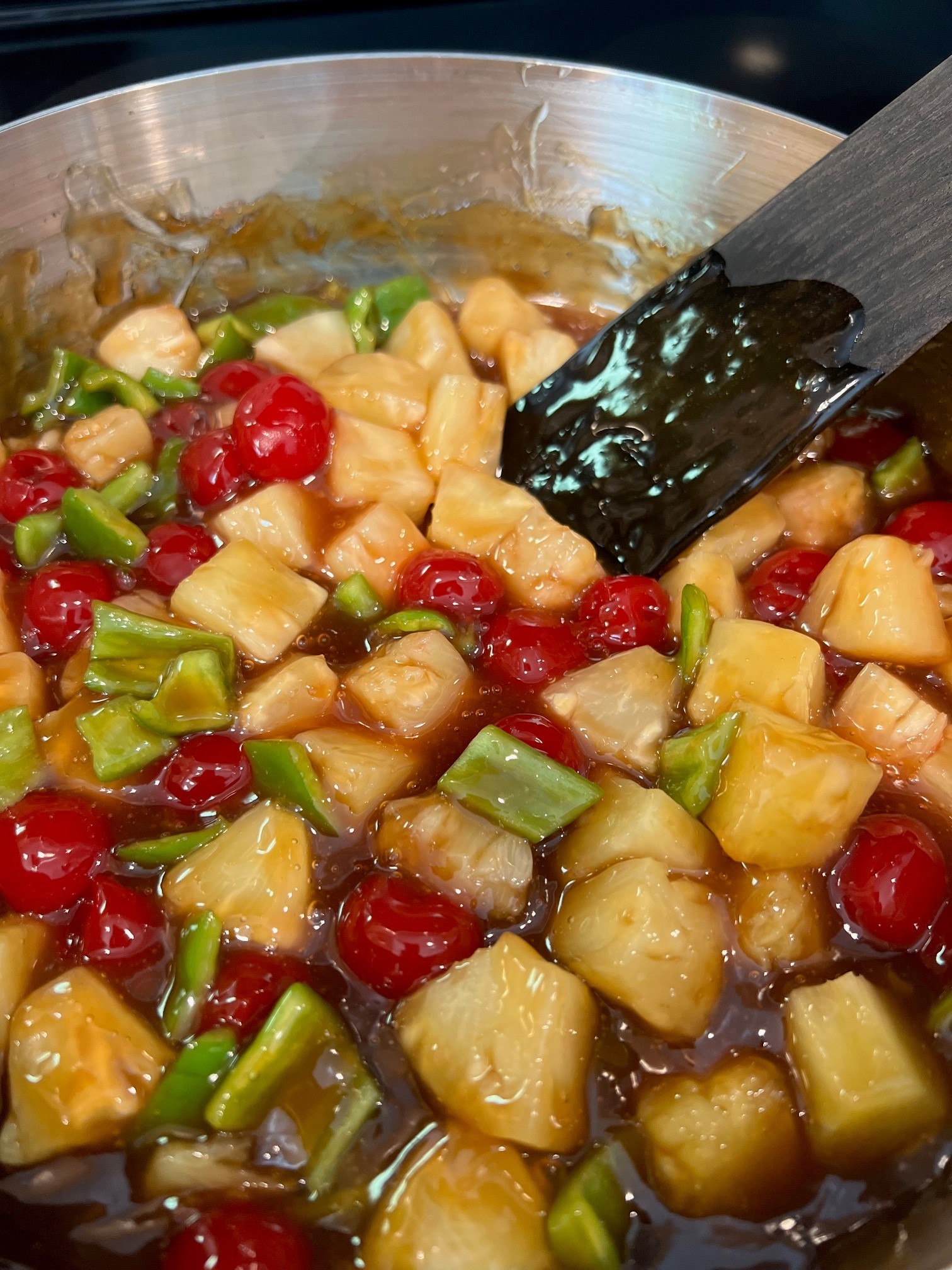
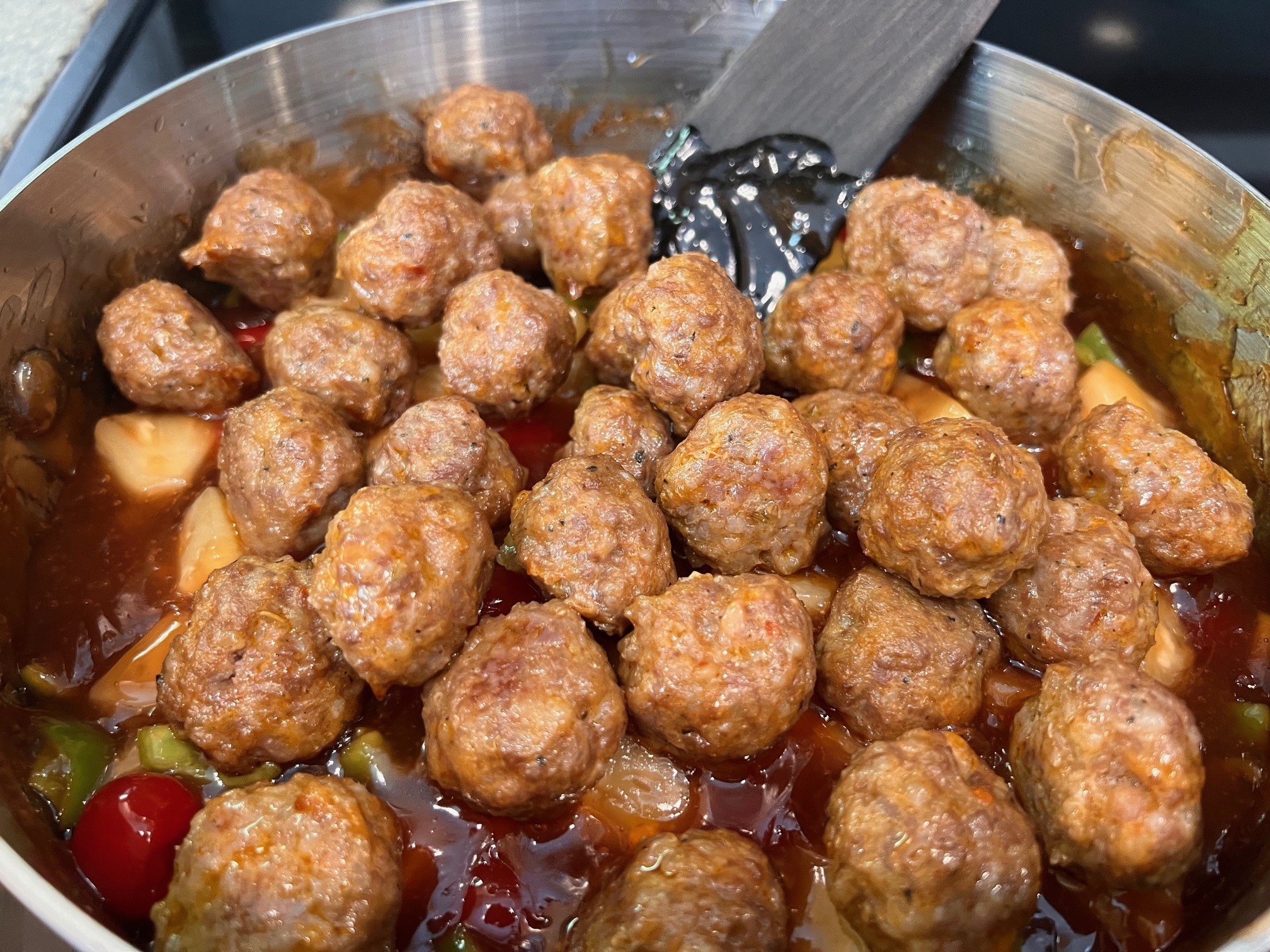
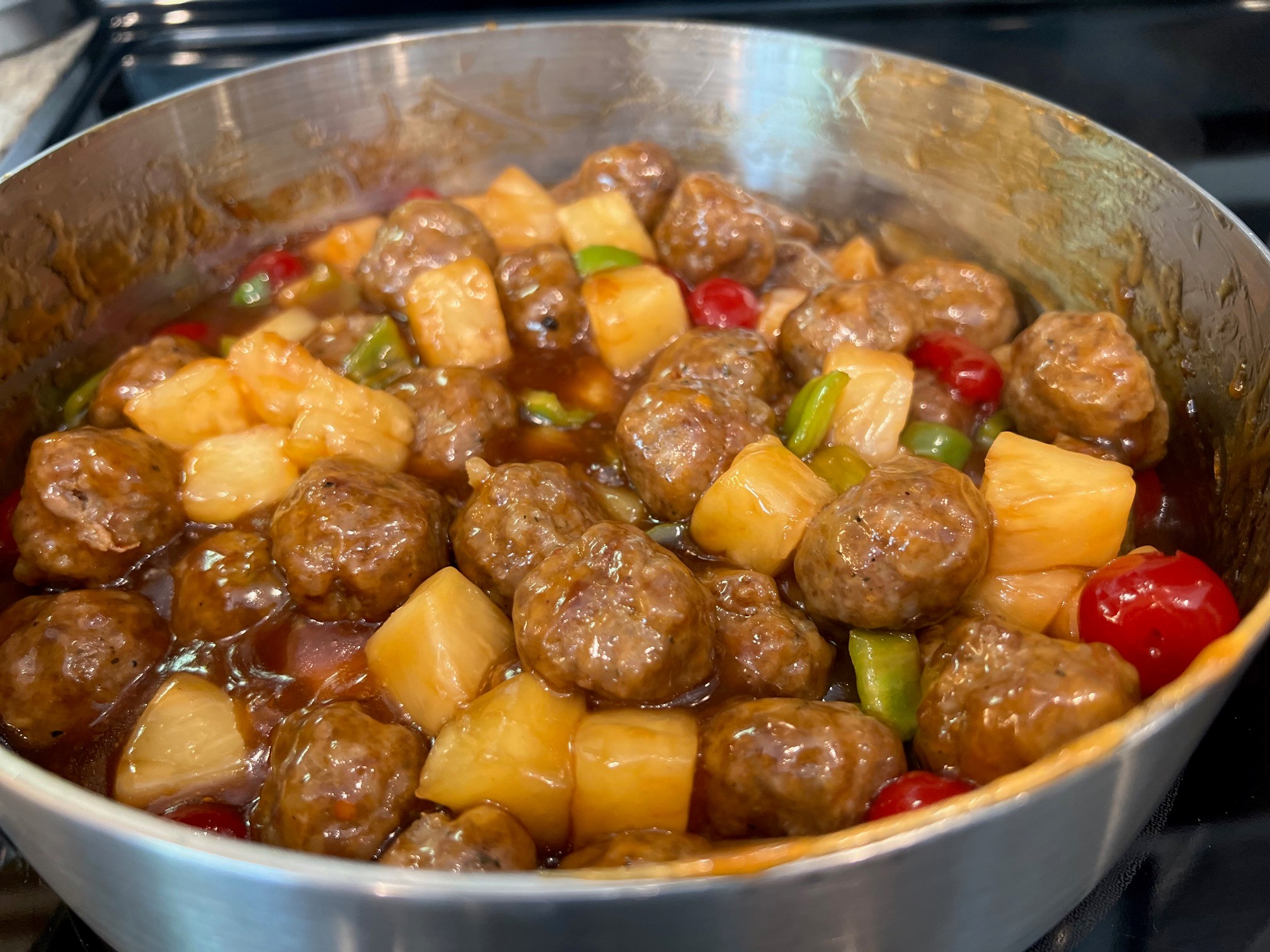
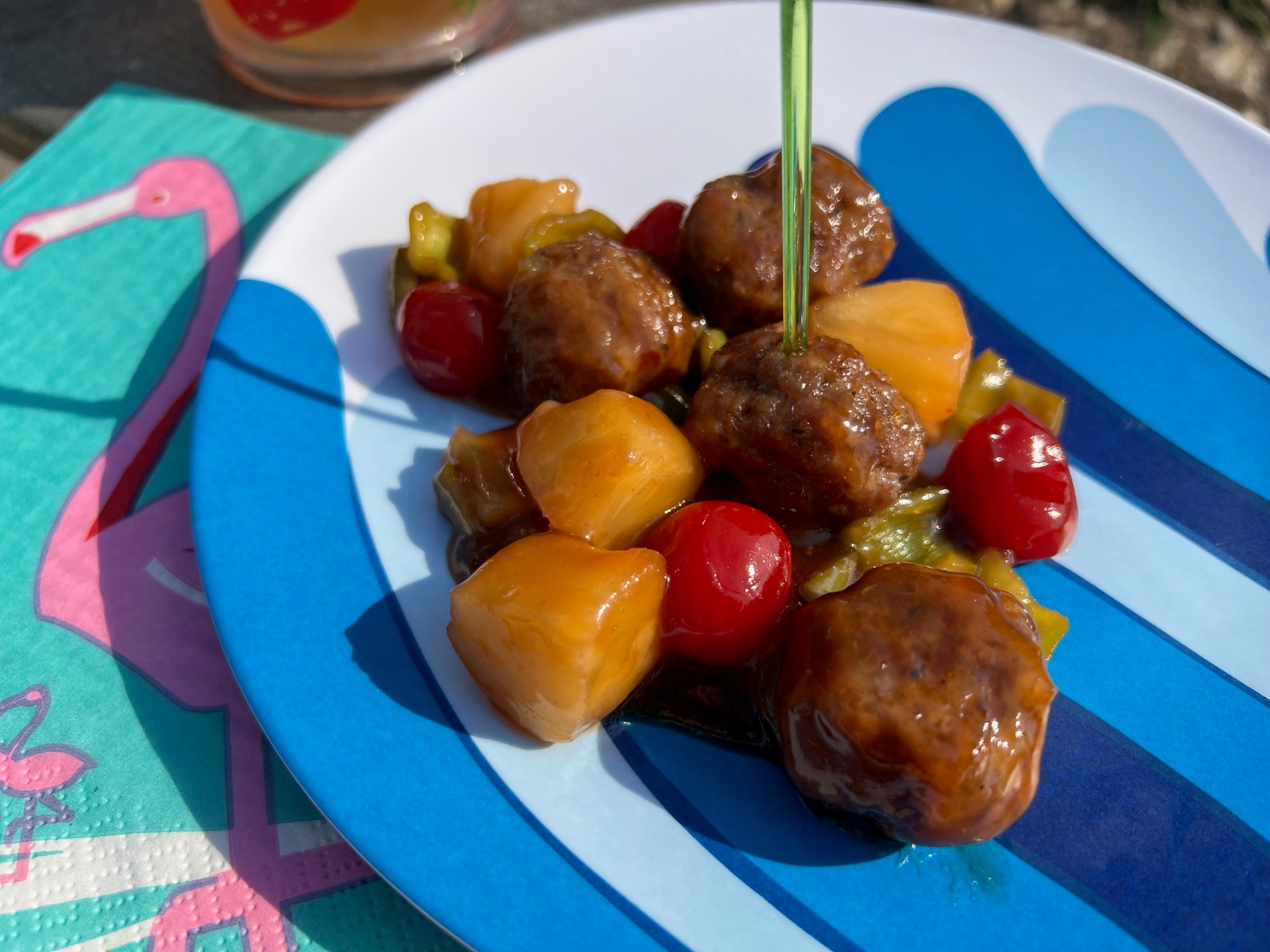
Contributor: Mavis Anderson
The daughter of John and Ida Torgrimson, Mavis Arlaine Louise was born March 20, 1927. She grew up on her the land her father homesteaded near Bergen, ND, attended its elementary school, as well as Velva High School. After a first year at Concordia in Moorhead, she transferred to Minot State College, graduating in 1949 with a degree in elementary and music education. In June of 1948, Mavis married Charles “Chuck” Anderson, born on the fourth of July in 1921, in Corinth, ND. The couple taught at several small-town schools prior to moving to Mavis’s family farm in 1956, where in addition to continuing to teach, they farmed small grains, sunflowers, and hogs until retiring in 1984. Always busy, Mavis and Chuck also raised three children of their own—Zana Jo, Kimberly, and Cary—in addition to being active in local, state, and national communities. For example, Chuck served in the state legislature as a representative, and Mavis was active in church organizations and choir, and after the couple moved to Bismarck in 2001, she volunteered at the ND Heritage Center. Mavis passed in January 2020; Chuck in 2001.
But the most fascinating piece of Mavis’s biography is her service as the state president of the North Dakota Porkettes and an executive board member of the National Porkettes. The Porkettes! What a name! I typically do not like feminized endings to distinguish women’s and men’s spheres, but how amazing is “Porkettes,” really? Who would have ever thought this was a title people would embrace? It’s both a gendered diminutive and potentially a sizeist insult. Later this organization became known as the National Pork Council Women (and ND for the state version). Frankly, that’s not much better but for grammatical and stylistic reasons—the title is now a noun stack—a string of nouns functioning as adjectives to modify the last noun, causing confusion and difficulty in pronunciation. It’s a fantastic mess.
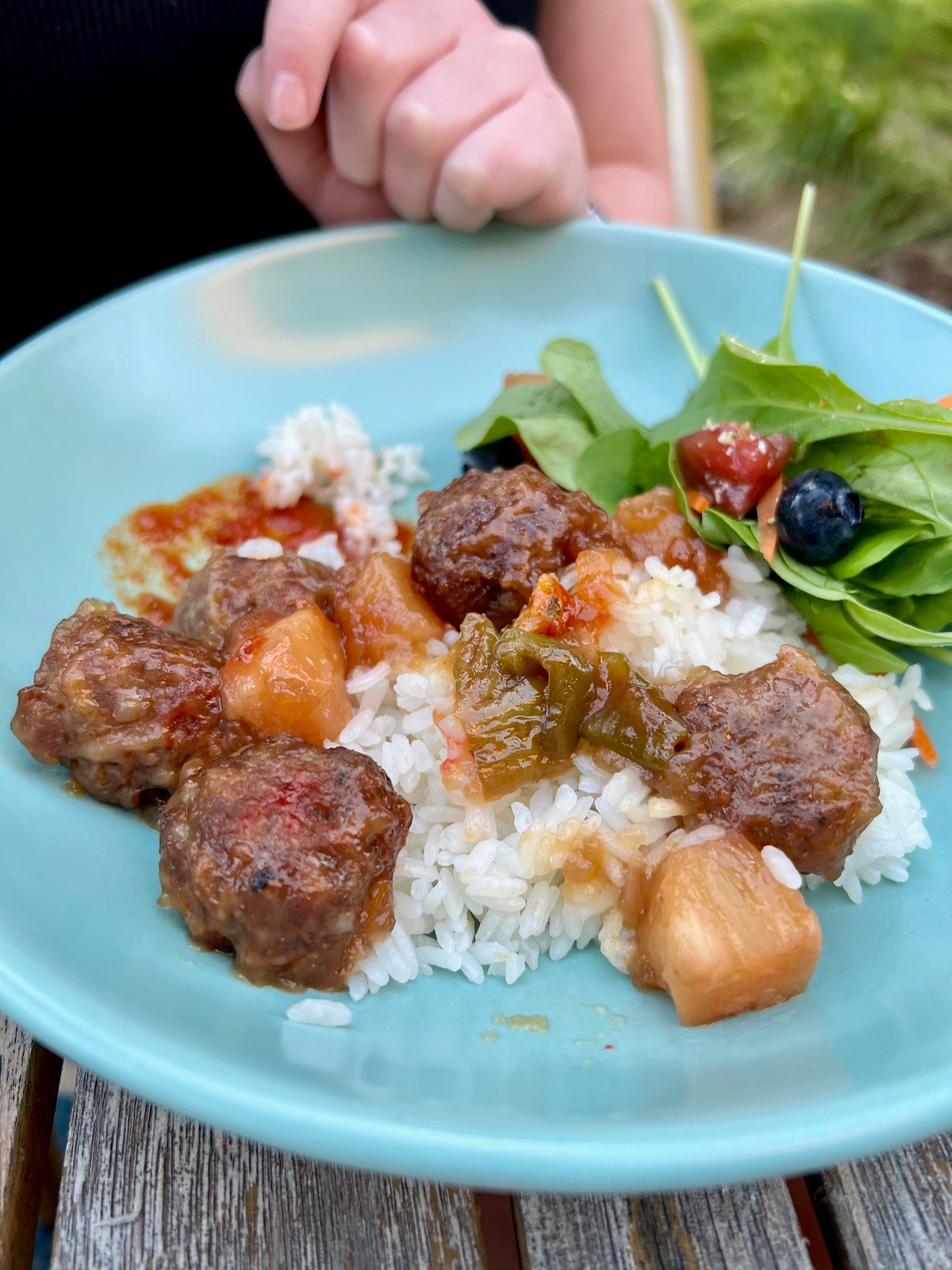
But this information solves the mystery of why these meatballs are just balls of pork sausage—this is a woman who championed pork! It’s moist enough—why not just feature the pork sausage’s abilities? Who needs a panade? Not the Porkettes, surely.
Mavis Anderson’s other contributions to The Joy of Sharing are ample: “ Water Chestnut Appetizers,” “Mrs. Torgrimson’s Doughnuts” (her mother? This is her last name prior to marriage),” “Pork Subgum” (another of those global/Midwestern food mashups),” “Fillet of Fish Almondine” (that’s fun to say aloud), “Potet Klub” (Norwegian Potato Dumplings!!!),” “Sausage Skillet Salad,” “Salmon-Shrimp Casserole,” and “Vegetable Casserole.” Also, Mavis clearly loves to use the “rule of three” in titles. How satisfying.

This post is part of an ongoing series in which I make and reflect on recipes and the people who contributed them to the 1985 Oak Valley Lutheran Church compiled cookbook, The Joy of Sharing.


